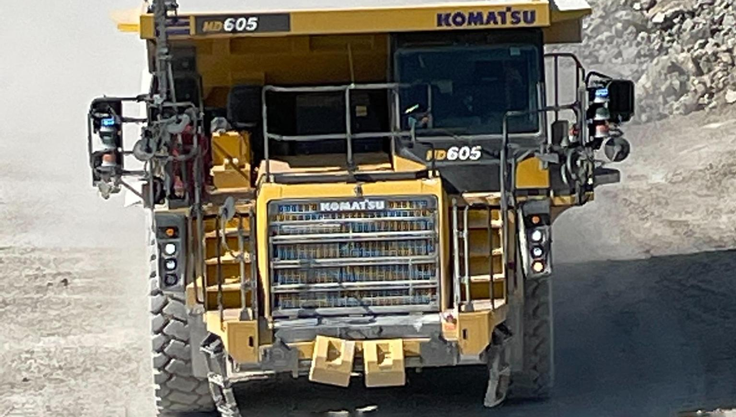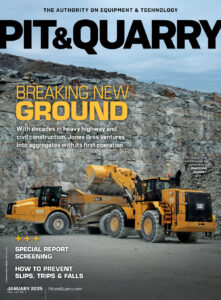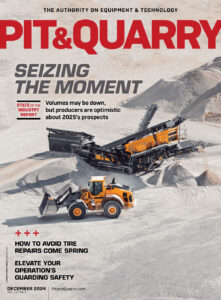
Pronto.ai’s Christian Kurasek paid P&Q a visit to discuss developments with autonomous haulage systems (AHS) and the tremendous potential for aggregate producers.
Autonomy isn’t necessarily new to mining. It is, however, now being introduced to aggregate producers, who generally operate significantly smaller haul trucks than large mining companies. Pronto has made the case that the best value related to autonomy is in the smaller truck space when shifting from manned haulers. All this said, why do you think we’ve seen the companies involved in autonomy within our greater industry approach it from vastly different angles?
Autonomy in the mining and quarrying space started with the biggest trucks and operations for a couple of reasons. Really, what they’re solving for there is productivity and uptime. If you’re mining a high-value global commodity that you can sell as much as you produce, you’re going to want those trucks running nonstop.
That was kind of the source of demand, and that’s what you saw the original systems responding to. This is no criticism, but when you look at where that started 20 to 30 years ago – and you’re talking about companies that make yellow iron at scale really well – that’s a different skill set than developing artificial intelligence and advanced software that powers our autonomy.
We came at it more from a technology perspective, whereas I think systems have traditionally come more at it in terms of just solving the problem – and cost was less of a consideration.
Our team’s history goes back to the 2004 DARPA Grand Challenge. We’ve been doing on-road for a very long time. It’s just a completely different mindset and approach. I think of it more as distributed autonomy where the intelligence is on the trucks, versus more big, industrial kinds of centralized autonomy systems.
Some of the bigger aggregate producers – Heidelberg Materials, for example, in Texas – are getting involved in autonomy with pilot projects and partnerships with companies like Pronto. In terms of exploration in aggregates, is autonomy limited at this point to the bigger companies? Where’s the line in terms of who can get involved, and who’s kind of ‘outside’ until further notice?
I don’t think there’s anybody outside. We’ve done a deployment that was at a small quarry in Northern California, running two or three trucks. We’ve obviously made the announcement about the project with Heidelberg. I don’t think we disclosed the number of trucks there, but it’s going to be more than two or three.
We’re working on some other [projects] in the mining sector. That’ll probably be our first foray into big numbers of Pronto AHS-powered trucks running in a single site. Our philosophy was [to] make a system that works at the smallest sites with the smallest trucks. Then, there’s no limit to where we can go.
What are some of the pain points that need to be overcome through the trialing Pronto is doing with aggregate producers and others to ultimately get the technology to real-world application?
There’s a few things. There’s the technology piece [and] how you make this work at a [lower] price point. If you’re talking about trucks that cost half a million dollars, your system can’t cost half a million dollars. So, how do you make that system work in a way that’s productive, safe, reliable [and] at a lower price point?
There’s the change management piece that’s critical in any deployment. You’re changing the nature of how these businesses go about producing their product. There’s ancillary stuff [like] how do you manage the fleet? How do you do dispatch? How do you ensure there’s a communications network that the autonomy needs to operate?
Related: Drilling Deeper Episode 27: Autonomous hauling and aggregates











